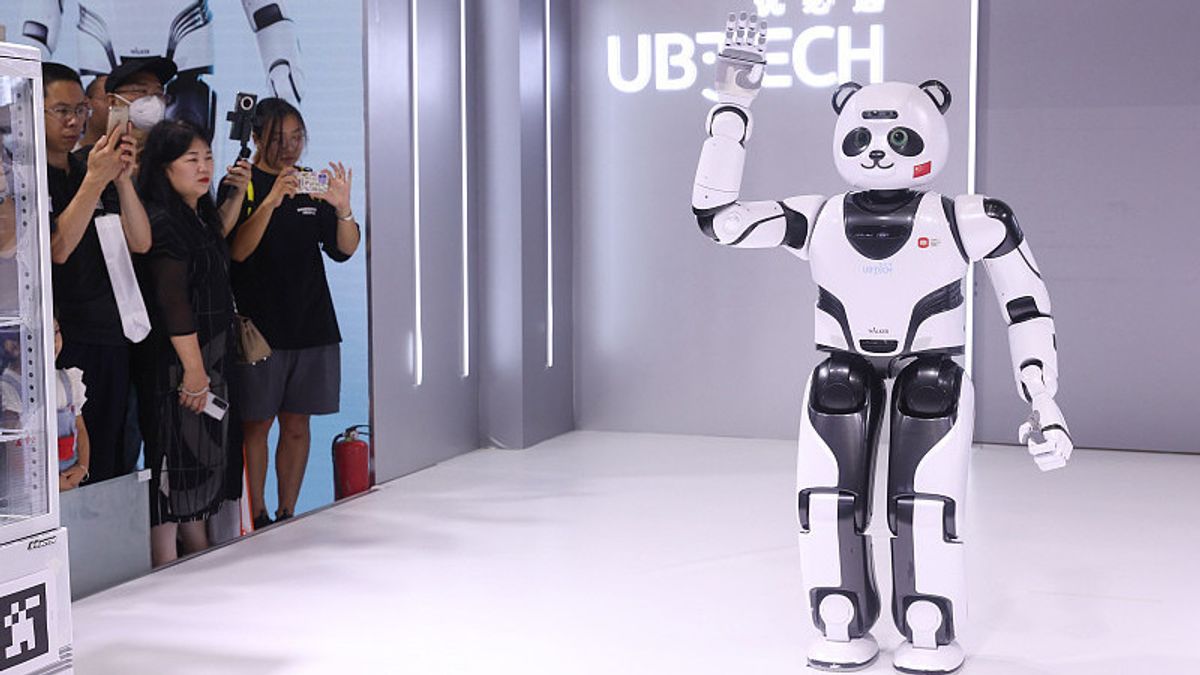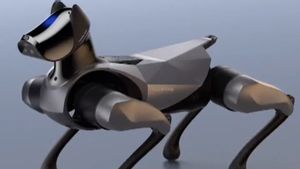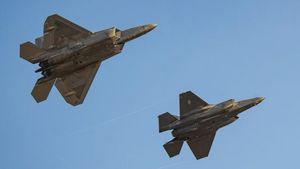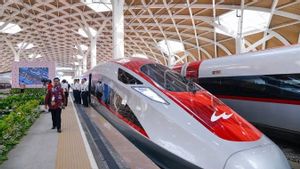JAKARTA - From creating tensions to really strange things, the most advanced robotic creation from around the world is exhibited in China's eighth World Robot Conference this week.
This annual event, which platforms to promote business in the robotics sector, took place at the Etrong International Exhibition and Convention Center in Beijing.
Among the machines on display are realistic humanoids with synthetic skin, four-foot 'dogs', and service robots serving food and beverage customers.
Meanwhile, robotic arms that are agile with double joints for use in factories show their ability amid local concerns about machines taking over human work.
Among the Chinese people, there is an increasing feeling of anxiety over the dependence on technology on the roles that are exposed to the public that were previously filled by humans.
The World Robot Conference starts on Wednesday, August 16 and will last until Tuesday, August 22.
One of the main attractions of this event is the head of animatronics and humanoid robots exhibited at EX Robots booths.
They realize an idea of what should be a robot in popular imagination, with synthetic skin and human-like facial expressions accompanied by moving arms and hands.
CEO Li Boyang said that they are ideal for roles that require interaction with the public, such as museums, tourist attractions, school environments, and 'friend scenarios'.
On the other hand of the conference hall, a one-port surgical robot developed by a company called Shurui is carrying out complicated tasks, such as peeling eagle eggs, to show high precision.
One-port operations are procedures carried out through one incision, which are already used in hospitals around the world for various procedures including kidney surgery and cystektomy.
Robotic surgery is gradually becoming more capable, providing minimum invasive robotic procedures with greater chances of success in the medical world.
Elsewhere in the exhibition, a 'French arts' robot wearing a beret and mustache was drawing sketches for the surrounding crowd.
World robot conference. Beijing pic.twitter.com/tcAOv6zpg8
— Irving Chen (@IrvingRobotics) August 19, 2023
World robot conference. Beijing pic.twitter.com/tcAOv6zpg8
Dog robots, one of the main stars of the high-tech show, also enlivened the event, including B1 from Unitree Robotics, a company based in Hangzhou, China.
Unitree recently introduced a robot dog model called Go2, which can stand in hand and run to greet the owner like a real dog.
At this conference, a robot dog from various manufacturers shook hands with exhibition visitors and stood in front of them.
The creation of another robot was seen putting basketball into the ring with his friend at the minifield at the convention center.
Robots that can play sports are increasingly popular in this industry and have even given birth to their own world championship tournaments.
Also present was CyberOne, a humanoid worth US$104,000 (Rp1.5 billion) developed by Xiaomi that runs human-like.
CyberOne is equipped with an AI interaction algorithm that allows it to feel 3D space, as well as recognize individuals, movements, and expressions. According to Xiaomi, this robot can recognize 85 different environmental voices and 45 human emotions.
اقرأ أيضا:
Other machines on display have been designed for the guest service industry, to replace human staff and the potential to save costs for those venues.
China is the right location for one of the largest robotic exhibitions in the world, not only because of its high level of technological innovation.
One of the goals of Chinese leader Xi Jinping is to direct the country's large manufacturing sector from the creation of low-cost cheap goods to high-tech-based production, and industrial robots will become an important element of the plan.
According to a 2016 report, more and more factories in China are using robots on assembly lines to replace workers demanding high salaries.
China's leading artificial intelligence expert Kai-Fu Lee has previously predicted that technology will take over half of all jobs in the mid-2030s. "Some sectors of work face a crisis "as farmers face during the industrial revolution," Lee said.
The English, Chinese, Japanese, Arabic, and French versions are automatically generated by the AI. So there may still be inaccuracies in translating, please always see Indonesian as our main language. (system supported by DigitalSiber.id)

















